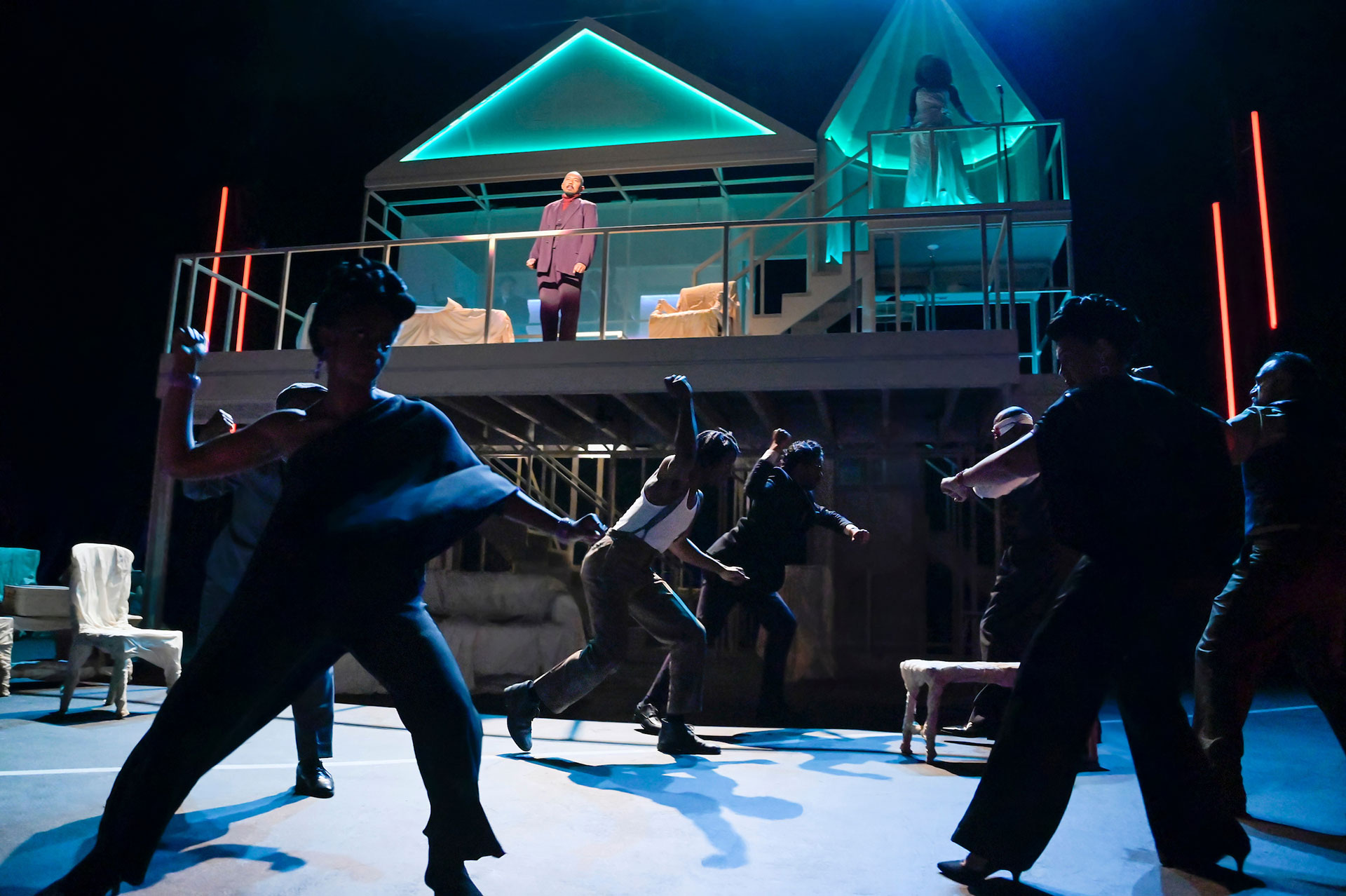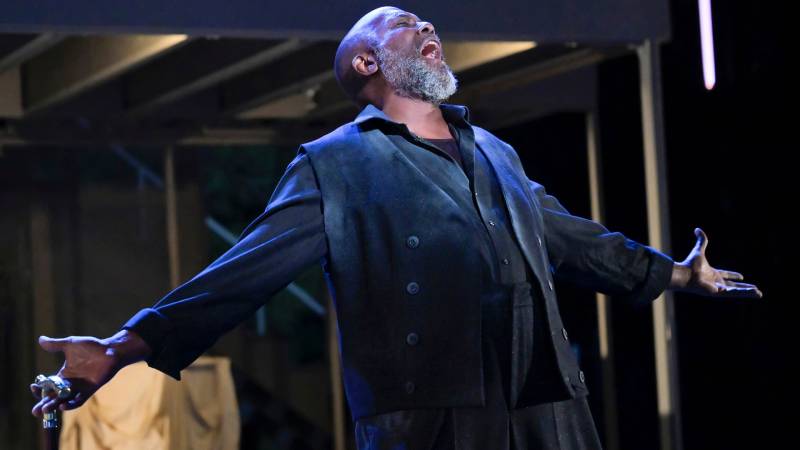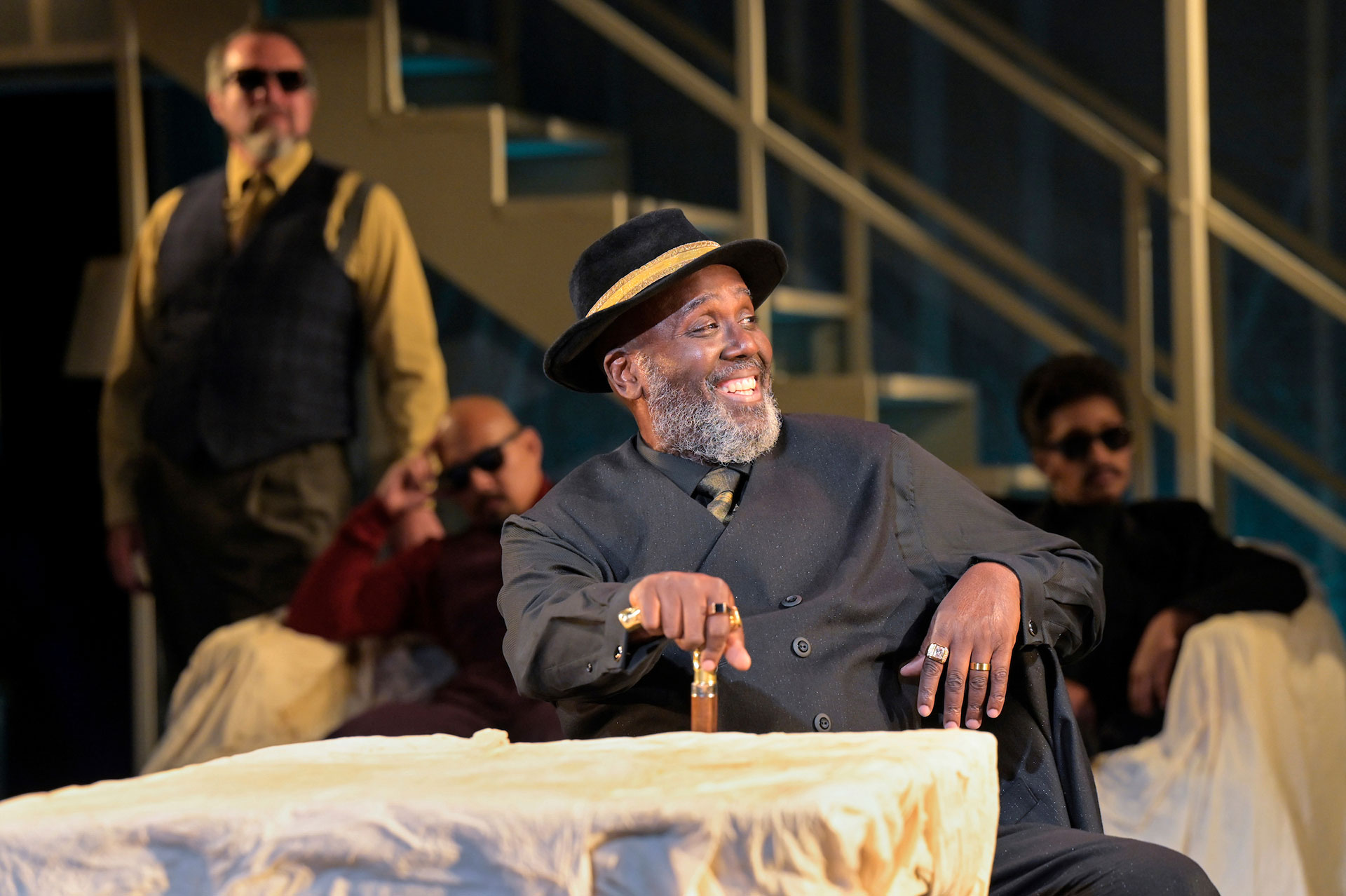When King Lear, played by James A. Williams, first appears on stage, he wears a long fur coat. His crown: a black fedora with gold ribbon trim. It’s a distinctly Black regalness that makes you think Teddy Pendergrass, not Anthony Hopkins. The scene is San Francisco’s Fillmore District in 1969–a time of “urban renewal,” which led to gentrification and the upheaval of Black communities.
These are the makings of Marcus Gardley’s LEAR, a modern-verse adaptation of Shakespeare’s famous tragedy, about an aging king who mentally comes undone. Gardley, an Obie-winning playwright who was born in Oakland, stays true to the original story and plot line of King Lear but gives it his signature stamp of poetic lyricism steeped in Black culture.
At the intimate yet towering Bruns Amphitheater, the soft sound of crickets is our silence and the starry night sky is our ceiling. The single set, by San Francisco scenic designer Tanya Orellana, is a cream-colored, open-faced two-story house that feels modern yet classic, walking the same line that Gardley does in his text.

Gardley’s interpretation gives birth to empowered performances across the entire cast, which is co-directed by fellow Oakland-born Dawn Monique Williams, alongside departing CalShakes artistic director, Eric Ting. The Black Queen, played by Verlina Brown, is striking in all white when she narrates the opening of the play, letting the audience know to essentially freak what you heard about that other King Lear. She then seamlessly slips into a beautiful singing voice that returns later in the play for the occasional jazzy interlude.
Acclaimed San Francisco-based jazz musician Marcus Shelby, who wrote the music for LEAR, plays his upright bass in an upper room of the house, alongside Scott Larson on trombone. This subtle but integral sonic backdrop aids the audience in moving from tender moments to funny exchanges to a few violent fight scenes. It also firmly plants the audience in late ’60s Fillmore, a.k.a. the “Harlem of the West.”




